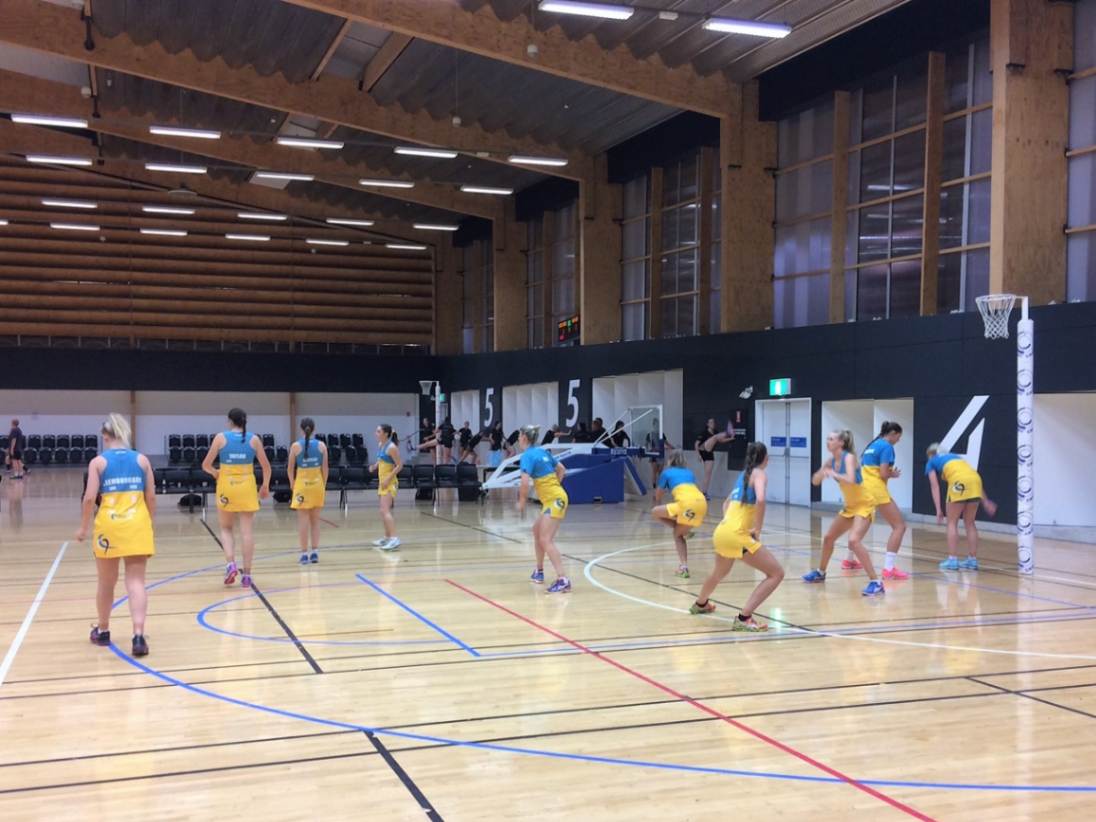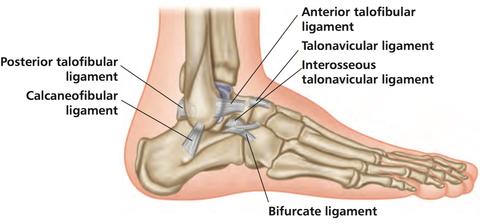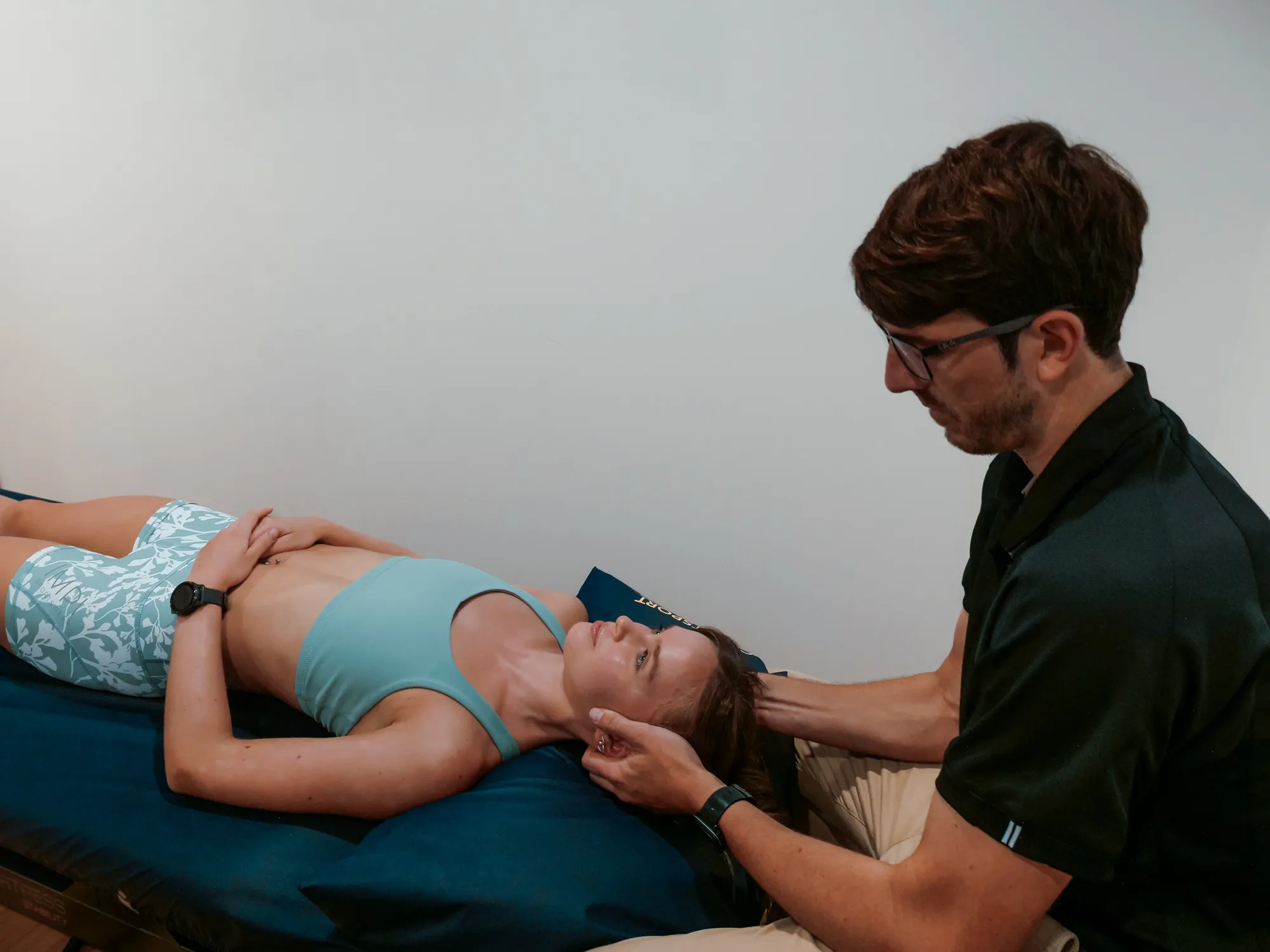icon
Ankle sprains are one of the most common injuries in netball players and can range in severity. Minor sprains may only take a week of rest and rehab, whereas more serious sprains can take much longer. The ankle accounts for 40% of netball injuries (Fong et al. 2007), due to the amount of jumping, running and change of direction during game play and training.


Know your anatomy
Ankle sprains often occur when the ankle rolls outward, causing the sole of the foot to turn inwards. This forces the ankle joint out of its normal position and causes damage to the surrounding ligaments (a stretch in minor ankle sprains or tear in serious ankle sprains).
The ankle joint is a hinge joint, formed between the bones of the lower leg (tibia and fibula) and the foot (talus) and its stability comes from the surrounding ligaments. Being a hinge joint, the ankle allows for dorsiflexion (bend upwards) and plantarflexion (bend downwards) as well as some rotation.
Laterally, 3 ligaments stabilise the joint. The anterior talofibular (front), the calcaneofibular (side) and the posterior talofibular (back). A sprain to any of these ligaments is classified as an inversion sprain, although the anterior talofibular is the ligament most likely to be damaged. On the medial side, sprains occur to a thick ligament known as the deltoid.
80% of ankle sprains occur on the lateral, outside of the ankle, which are known as inversion sprains and the other 20% is made up of medial (inside) ankle sprains, which are eversion sprains.
Signs and symptoms
Symptoms will vary depending on the severity of the sprain. You may experience some or all of the following:
– Pain
– Swelling
– Bruising
– Difficulty weight-bearing
Treatment
When suffering from an ankle sprain, it is important that you follow the POLICE principle initially after suffering from the injury.
Protection: This includes resting the injured area initially and starting gentle motion after a few days.
Optimum Loading: Although resting the injured area, some movement should still be maintained. Start with passive range of motion and move on to active range of motion.
Your physiotherapist can advise you on the best exercises to use for your rehabilitation.
Ice: Ice can help manage swelling and decrease pain. As a rule of the thumb, try 10 minutes every hour. Remember, ice should not burn.
Compression: Compression bandages may help your rehabilitation. Speak to your physiotherapist about the best method for you.
Elevation: Place your injured ankle on a stack of pillows while lying down to help elevate the area.
Taping can be used after the initial ankle sprain at the recommendation of your physiotherapist.
Yph_j9oDYvk
700
400
Although minor ankle sprains may just require rest to heal, many require further treatment and rehabilitation. It is best to see a physiotherapist, so you can get the most out of your rehabilitation, get back to playing as soon as possible, and look at preventing further ankle injuries.
Risk factors
There are a number of factors that may make you more susceptible to ankle sprains, including:
– History of previous ankle sprains/injuries
– Improper footwear
– Not warming up, cooling down and stretching
– Lack of flexibility of ankle joint, or extreme flexibility
– Poor balance
– Ankle instability
– Lack of strength
Prevention
Although ankle sprains are not completely preventable, you can minimise your risk.
To minimise your risk of ankle sprains, it is important that you warm up properly, follow your strength and conditioning program and undertake regular ankle sprain prevention exercises which should include both strength and proprioceptive (balance) exercises. This can include but is certainly not limited to:
– Single leg hop and land (forward, backwards and sideways). Progress to landing on foam when you are comfortable.
– Single leg squat. Progress to foam when you are comfortable.
– Single leg calf raises.
There are also other options you should consider with your physiotherapist if you have suffered or are susceptible to ankle sprains, including preventative taping, specific strength and conditioning training and assessing your footwear.
Disclaimer: As all injuries are different, it Is recommended that you consult a professional as soon as possible following the injury to get tailored advice.
Book an appointment at Coast Sport by calling (02) 4356 2588 or online via the button below.





 Helping the Central Coast Feel Well, Move Well and Perform Well!
Helping the Central Coast Feel Well, Move Well and Perform Well!